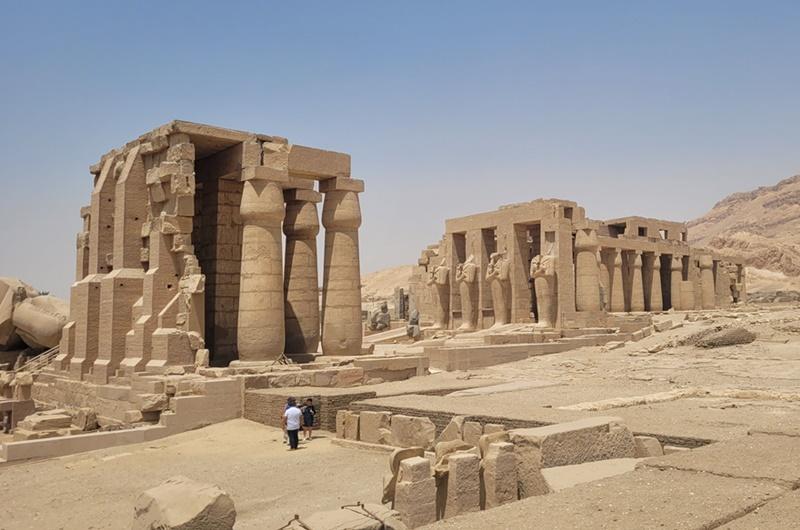
The Korea National University of Cultural Heritage under the Cultural Heritage Administration has been named a private contractor for the Egyptian Cultural Heritage Preservation and Management Support Project to aid the preservation and management of the North African country's cultural heritage like the Ramesseum (shown), the funeral temple of Pharaoh Ramses II in Luxor, Egypt. (Cultural Heritage Administration)
By Israa Mohamed
The nation this year will preserve and manage Egyptian cultural heritage for the second straight year.
The Cultural Heritage Administration (CHA) on Feb. 13 named the Korea National University of Cultural Heritage (KNUCH), a CHA affiliate based in Buyeo-gun County, Chungcheongnam-do Province, as the private contractor for the Egyptian Cultural Heritage Preservation and Management Support Project.
As part of CHA's official development assistance, the project aims to boost Korea's global reputation in cultural heritage through technical support and higher capacity for the sustainable conservation, management and use of Egyptian cultural heritage.
After first receiving the designation of contractor in April last year, KNUCH did research on the Ramesseum, the funeral temple of Pharaoh Ramses II in Luxor, Egypt, came up with visitor routes at the venue, and planned and produced digital content for the Luxor Museum, which houses among the rarest cultural heritage from Egyptian history.
With a budget of KRW 5.2 billion, this year's project will support the preservation, management, use and restoration of Luxor's cultural heritage. One task is to make records of the Egyptian city's artifacts using digital technology to build a database.
CHA will also do field studies, assess ground safety and structural stability, and use 3-D modeling to restore the Ramesseum's pylon.
Through the end of the year, other works will include support for and installation of equipment at the Digital Heritage Center to be built within the Al Manial (Prince Mohamed Ali) Palace, do joint research on the guidelines for digital heritage acquisition and offer on-site training for workers in Egyptian cultural heritage.
ess8@korea.kr